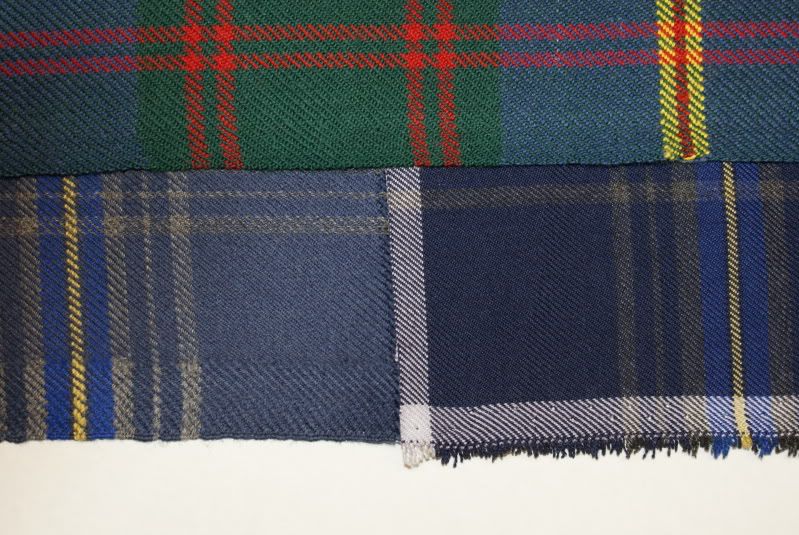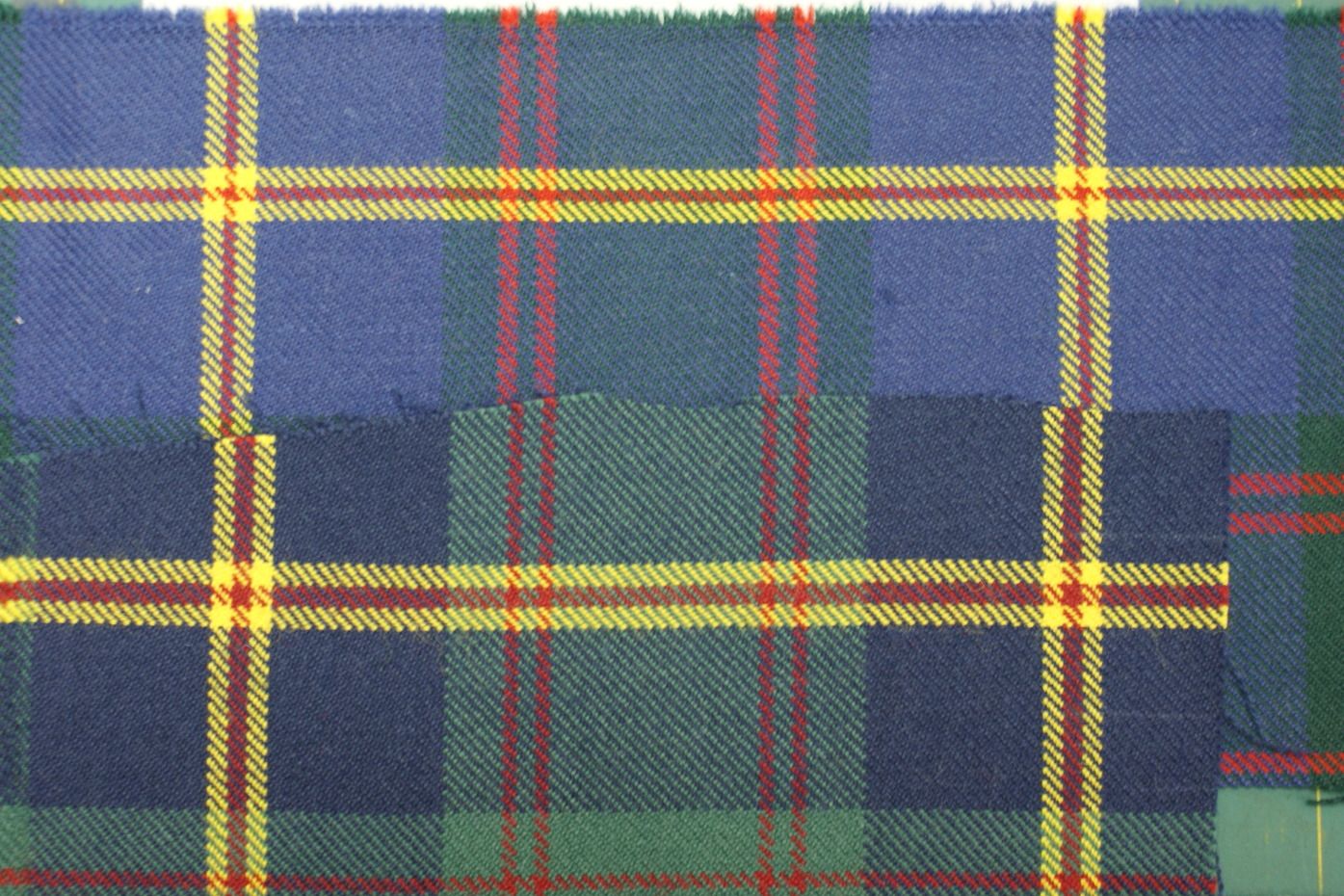|
-
A Hem...
Morning all,
I was curious if the bottom of a kilt should be hemmed, or if it is simply left unfinished. My scarlet military tunic is correctly not hemmed per tradition, so I am wondering as mine came unhemmed if this is how they're finished.
McRoy of the Clan McRoy
-
-
Allen Sinclair, FSA Scot
Eastern Region Vice President
North Carolina Commissioner
Clan Sinclair Association (USA)
-
-
Traditional kilts have a finished selvage edge at the bottom, and should not be - and should not need to be - hemmed. Since it's a selvage edge, it won't unravel.
-
-
Yup, if it's a traditional wool kilt, you can see the selvedge at the bottom where the yarns are tucked back into (woven back into) the fabric. Nothing need be done here. This is how it's supposed to be.
If we're talking about some other type of material or nontraditional kilt, it may be different.
-
-
Ah, well being as it's a rather cheap entry level kilt, it is simply cut, not finished. Not being sure how much wear I'd get out of any kilt, I really only intended this one for costume use, thus it didn't merit spending a lot on a quality kilt. Of course if I were to find more opportunities for wearing a kilt, I'd invest in a better one.
-
-
Traditional kilts can be hemmed or unhemmed. There has been discussion on this before with the professional kiltmakers weighing in with that opinion as there are valid reasons why a kilt would be hemmed. What you don't see are cut, unfinished hems.
--Always toward absent lovers love's tide stronger flows.
-
The Following User Says 'Aye' to Dixiecat For This Useful Post:
-
Apparently you do now... Mine is cut but not hemmed. But to be fair it won't take much to hem it. I was just asking as my Scarlet tunic is not hemmed and left cut. This is traditional for military tunics.
-
-
Then I guess you'll be busy with needle and thread? ;)
Isn't the hem ravelling? Or is there a line of stitching above the cut line?
--Always toward absent lovers love's tide stronger flows.
-
-
I am really surprised that a cut edge is not unraveling. I would only take a few moments for a cut edge to look really bad.
Are you sure it is cut McRoy?
Here is a picture of three kilt selvedges. None of these is hemmed. By hemmed I mean folded over and sewn.

On the top is a true kilt selvedge. This fabric edge is formed by one continuous warp yarn going back and forth. This edge does not require a hem and will not unravel.
The bottom left fabric has what we here call a tuck selvedge. This is the most common selvedge found today. You can see where a short part of the yarn is tucked back and woven into the fabric again. This edge also does not require a hem and will not ravel.
On the bottom right is what is known as a fringed selvedge. This is usually only found on some synthetic Tartan fabrics. It will not ravel and does not require a hem but most are hemmed simply to make it look neater.
Here are two fabric edges which do require a hem. At the very top is an edge that has been ripped and below one that has been cut with scissors. On both you can see the fibers starting to un-ravel. This only took a few moments for this un-ravelling to happen.

If the kilt you have is not un-ravelling leaving long strings hanging down theb it probably has not been cut and what you are actually seeing is a kilt selvedge of one sort or another.
Last edited by Steve Ashton; 15th May 14 at 10:26 PM.
Steve Ashton
www.freedomkilts.com
Skype (webcam enabled) thewizardofbc
I wear the kilt because: Swish + Swagger = Swoon.
-
-
16th May 14, 08:21 AM
#10
Some traditional military fabrics that have been strongly felted ("boiled wool") can be cut without raveling, so maybe this is the case with your military tunic. I suspect that might be the case, because the bottom edge of a tunic should be a lightly curved edge rather than a straight edge parallel to a selvedge. Can you post a pic so we can see?
As the Wiz said, if you truly have a cut edge, you should be able to pull threads. If so, there's no reason that you can't put a hem in it if you find that it ravels. Hems are actually common in some kinds of kilts. Light weight tartan that dancer's kilts are made from, for example, typically do not have a kilting selvedge (i.e., the selvedge is ugly), and they require hems.
You wouldn't make a heavy weight kilt from scratch with a hem unless the selvedge were truly ugly, which does occasionally happen (and, in fact, happened with one of the weaves of the XMarks tartan a few years back). But, I have hemmed our band kilts in heavy weight tartan when a band member was unable to find one of our kilts that fit. The hem is not actually noticeable. Several of our band members were standing around, and I challenged our dress and deportment officer to tell me which kilt had a hem. He couldn't tell until I pointed out that the tartan at the bottom of the kilt was different in the one that was hemmed. We have a very stripey tartan, so it wasn't obvious, but he definitely didn't twig to it until I pointed it out. Other than that, you couldn't see any evidence that the kilt was hemmed.
-
 Posting Permissions
Posting Permissions
- You may not post new threads
- You may not post replies
- You may not post attachments
- You may not edit your posts
-
Forum Rules
|
|






















Bookmarks